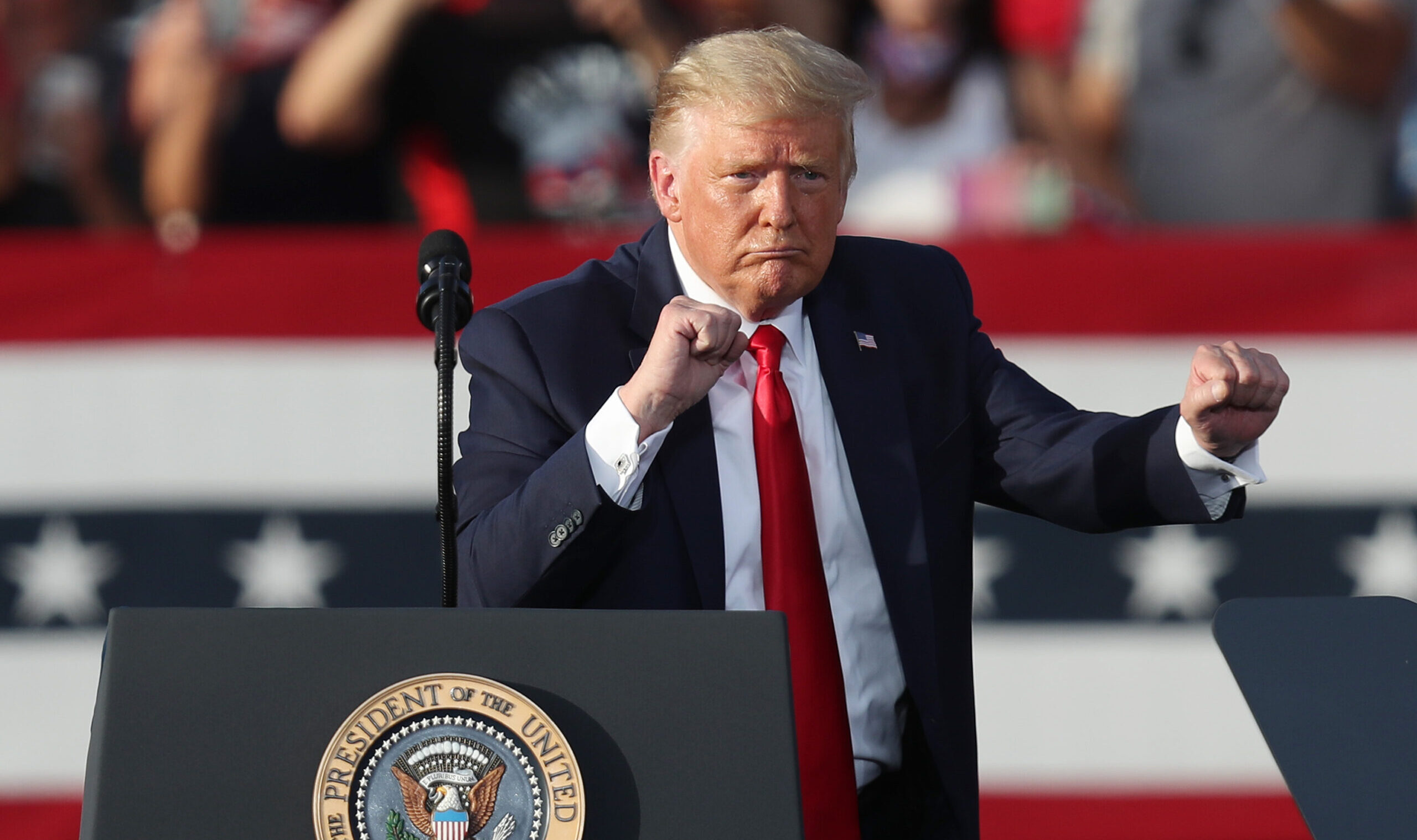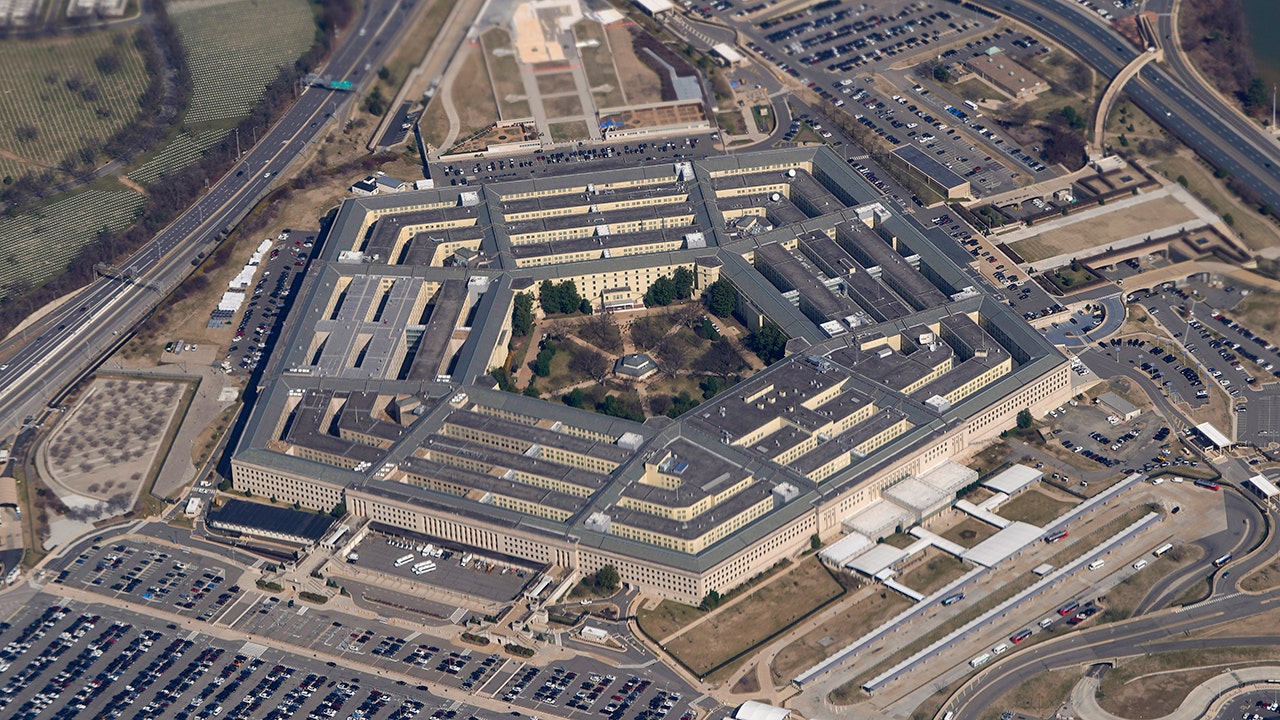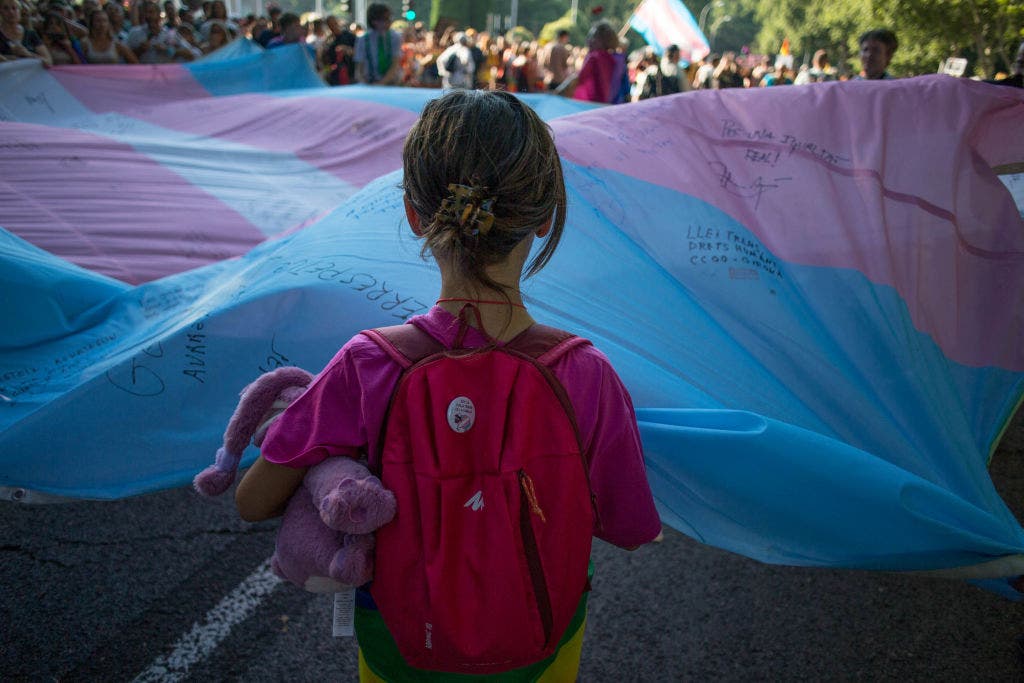Politics
Video: U.S., Japan and South Korea Tighten Ties at Camp David

new video loaded: U.S., Japan and South Korea Tighten Ties at Camp David
transcript
transcript
U.S., Japan and South Korea Tighten Ties at Camp David
President Biden, Prime Minister Fumio Kishida of Japan and President Yoon Suk Yeol of South Korea committed to expanding security and economic cooperation among their three countries.
-
“Today, we’ve made history with the first-ever stand-alone summit between the leaders of our three countries, as well as our commitment to meet together on a leader level annually and to have all our relative cabinet member people meet on a regular basis for from this point on. Not just this year, not next year, forever. I want to recognize the important work that both of you have done and the political courage, and I mean this sincerely, the political courage that you both demonstrated to resolve difficult issues that have stood in the way for a long time of a close relationship between Japan and Korea and with the United States.” [Translator] “Camp David will be remembered as a historic place where the Republic of Korea, the United States and Japan proclaim that we will bolster the rules-based international order and play key roles to enhance regional security and prosperity based on our shared values of freedom, human rights and rule of law.” [Translator] “We will vigorously implement the concrete cooperation outlined in the Camp David statement. Together with Joe and President Yoon, we will continue to work to further strengthen the strategic partnership between the three countries.” “This summit was not about China. That was not the purpose of the meeting. But it did — China obviously came up. Not to say we don’t share concerns about the economic coercion or heightened tensions caused by China, but this summit was really about our relationship with each other. It was about a more peaceful and prosperous Indo-Pacific, a region, quite frankly, that would benefit everyone living there and around the world if we get it right.”
Recent episodes in U.S. & Politics

Politics
In an early legislative test for Trump, plan B spending bill tanks in House
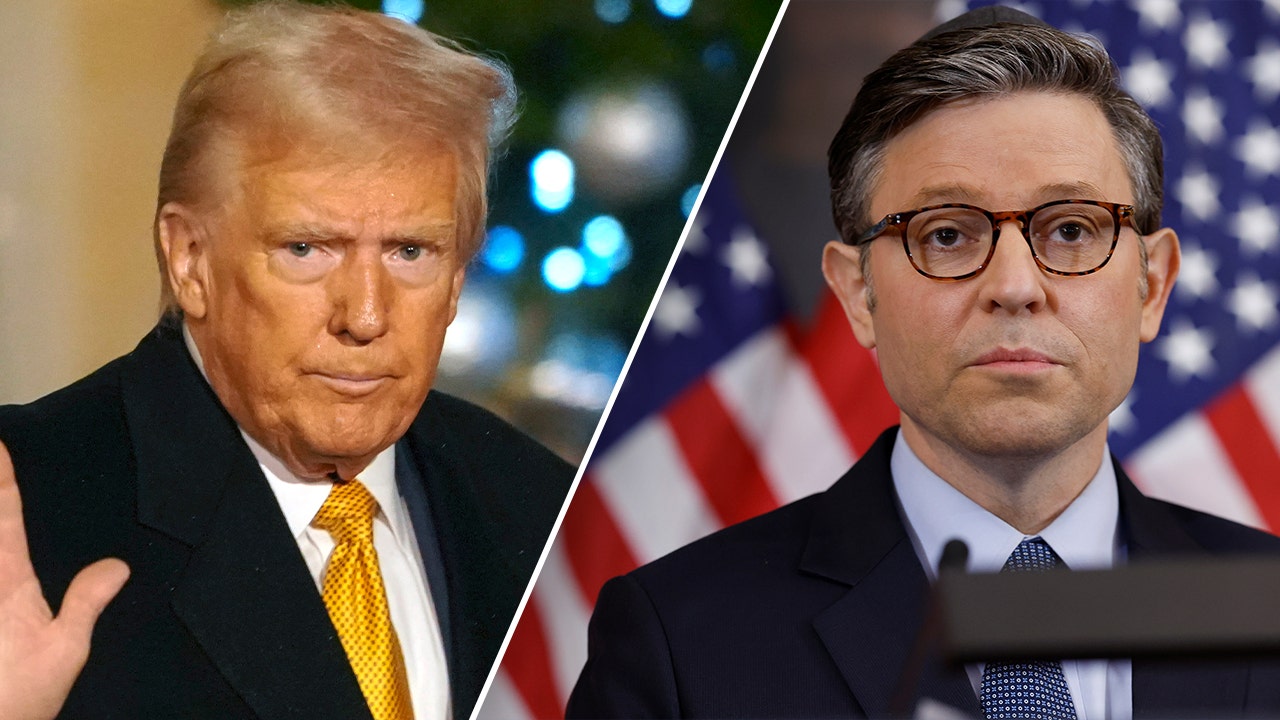
House Republicans failed to secure the majority votes needed Thursday on a spending bill to avert a government shutdown by week’s end, handing a decisive loss to President-elect Trump in an early test of his ability to unite Republicans in the chamber.
The bill failed by a vote of 235-174, including 38 Republicans who voted down the legislation.
The bill not only failed the method that allowed lawmakers to fast-track it with a two-thirds majority. It also failed to pass by normal standards, which require a threshold of 218 “yea” votes.
TRUMP-BACKED SPENDING BILL TO AVERT GOVERNMENT SHUTDOWN FAILS HOUSE VOTE
Among the 38 Republicans who voted against the bill was Rep. Chip Roy, R-Texas, who torched the funding legislation in a speech on the House floor.
Roy, who spent much of the day Thursday sparring with Trump over Roy’s opposition to the deal, noted that the measure would allow $5 trillion to be added to the national debt, cutting against the GOP’s tenet of fiscal responsibility.
Roy said Republicans who voted to approve the measure lack “self-respect.”
Rep. Chip Roy, R-Texas, talks to reporters as he walks near the House Chamber. (Tasos Katopodis/Getty Images)
“I am absolutely sickened by a party that campaigns on fiscal responsibility and has the temerity to go forward to the American people and say you think this is fiscally responsible,” said Roy, who had also opposed the first spending bill. “It is absolutely ridiculous.”
Still, the number of Republicans who failed to fall in line Thursday evening could signal bigger challenges ahead for Trump, who had sought to bend House Speaker Mike Johnson and others in the chamber’s GOP majority to his political will and pass through a new bill with a higher debt ceiling.
That bill sparked opposition from Democrats, who were more broadly opposed to the idea, and from fiscal conservatives within the Republican Party.

President-elect Trump, Tesla and SpaceX CEO Elon Musk and Donald Trump Jr. at UFC 309 at Madison Square Garden in New York Nov. 16. (Kena Betancur/AFP via Getty Images)
With $36 trillion in debt and a $1.8 trillion deficit in 2024, some conservatives are against a continuing resolution, which punts the funding deadline to March and keeps spending at 2024 levels. The deal Trump had pushed for would have included a two-year suspension of the debt limit, sparking further opposition among some Republicans.
‘HELL NO’: HOUSE DEMS ERUPT OVER GOP SPENDING DEAL
That divide put pressure on Democrats, who had widely signaled their intent Thursday to oppose the legislation. Minority leaders spent most of the day railing against Trump and Elon Musk for interfering in the process and tanking the first spending deal, which had been slated to pass Wednesday night with bipartisan support.
Ahead of the vote on the new bill Thursday, Democrats led chants of “hell no,” sending a clear signal of their displeasure over the way the new spending bill was teed up.
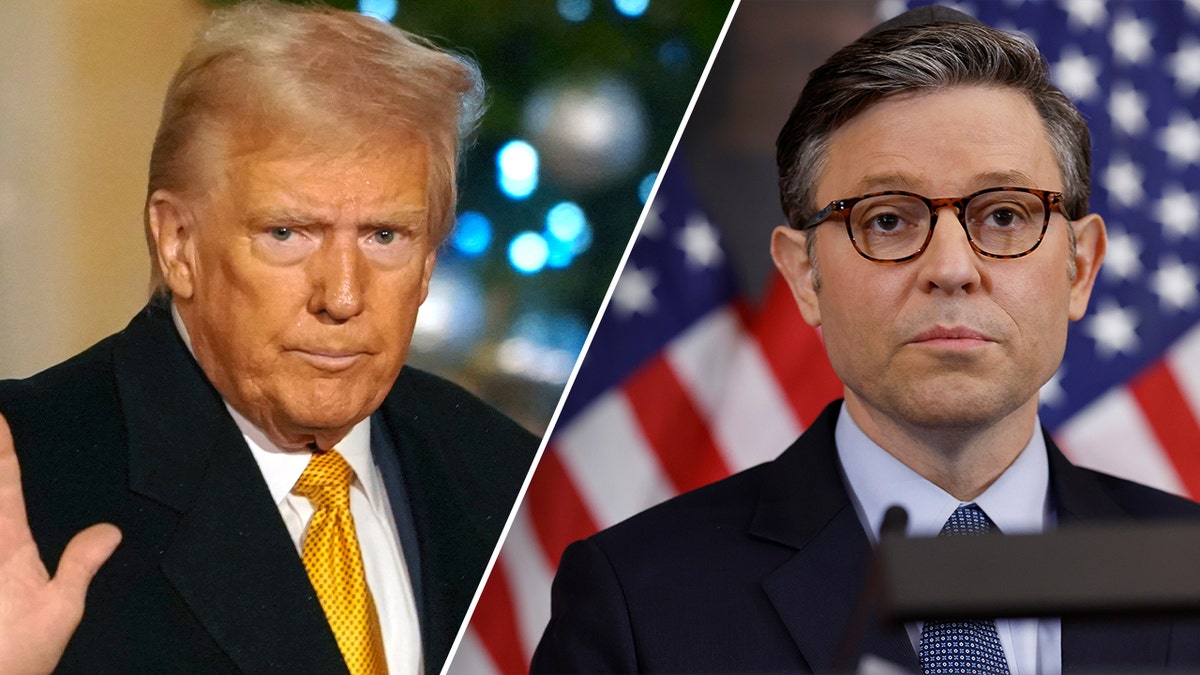
President-elect Trump and Speaker Mike Johnson, R-La., are struggling to prevent a government shutdown. (Getty Images)
Following the bill’s failure, Johnson immediately began huddling with a group of House Republicans who had voted against the bill in a likely attempt to shore up support for another vote Friday.
“Very disappointing to us that all but two Democrats voted against aid to farmers and ranchers, against disaster relief, against all these bipartisan measures that had already been negotiated and decided upon,” Johnson said after the failed vote. “Again, the only difference in this legislation was that we would push the debt ceiling to January 2027.
“I want you all to remember that it was just last spring that the same Democrats berated Republicans and said that it was irresponsible to hold the debt limit, the debt ceiling hostage.”
Politics
Can California change a dark culture at Chowchilla women's prison?

CHOWCHILLA, Calif. — Gazing across the crowd of women, fresh from county jail in their orange prison jumpsuits, Lena Coleman wishes she could save them all.
And it’s her job to try.
In July, after 20 years in prison for attempted murder and a gun enhancement, Coleman, 47, became one of three dozen prisoners at the Central California Women’s Facility in Chowchilla to graduate from a peer support specialist program.
California’s efforts to improve conditions at the women’s prison in Chowchilla are complicated by the deep level of trauma many female prisoners have experienced.
(Gina Ferazzi / Los Angeles Times)
The program is a part of the California Model, an ambitious effort Gov. Gavin Newsom launched in March 2023 to overhaul a prison system built on fear and retribution and replace it with opportunities for more normalized social interaction. The changes are modeled after prison operations in Norway and other Scandinavian countries, where incarceration is considered a tool for rehabilitation rather than harsh punishment.
At Chowchilla, a sprawling campus set in the farm fields of Madera County, the peer support specialists have become the backbone of that transformation.
Every day, they fan out across the prison, serving as something between a therapist and life coach to the roughly 2,100 women incarcerated at the facility, one of two women’s prisons in California.
Coleman works in Building 501, a reception yard that houses new prisoners before they transfer “over the wall” into the general population.

Prisoner Markeisha Dixon is among the trained peer support specialists working to instill a stronger sense of community for women incarcerated at the Chowchilla women’s prison.
(Gina Ferazzi / Los Angeles Times)
Her job is often limited in scope: helping a new arrival find prison garb that fits, or working with the healthcare services team to remind patients to take their medicine or attend an upcoming medical appointment.
Other times, the work requires more intense intervention.
Staff might call a peer support specialist to help de-escalate violence or ease a behavioral crisis. As mandated reporters, they can be the difference between someone dying of suicide or accepting mental health services.
Mostly, Coleman is there for whenever someone needs to talk — or cry — with a trusted confidant.
“I tell them that prison is going to be what you make it,” she said. And then she offers them a piece of advice: “I’m just like you. I’ve been there, done that. Only difference is I have changed my ways.”

Gov. Gavin Newsom launched the California Model reform effort in 2023 at San Quentin, with an aim of expanding job training and rehabilitation programs.
(Robert Gauthier / Los Angeles Times)
Newsom chose San Quentin in Marin County, the state’s oldest prison, to jump-start the California Model last year. At San Quentin, prison officials are focused on improving relations between officers and prisoners, two historically warring factions in a violent system unaccustomed to change.
The California Model looks a bit different at Chowchilla — and it must.
A majority of incarcerated women in the U.S. endured some combination of physical, sexual and emotional abuse before committing the crime that sent them to prison, researchers have found. Often, that abuse was inflicted by a husband or boyfriend. Most are single moms of young children who have lost custody because of their crimes.
At the same time, women’s prisons often lack the mental health services and rehabilitative programming to help address deep trauma, said Alycia Welch, associate director of the Prison and Jail Innovation Lab at the Lyndon B. Johnson School of Public Affairs at the University of Texas at Austin.
“Prisons and jails, when they were built, were not built at all with women in mind,” Welch said.
Compared with male inmates, incarcerated women report higher rates of sexual assault in prison. In September, federal prosecutors announced a civil rights investigation into sexual abuse at both Chowchilla and the California Institution for Women in Chino, citing multiple reports of groping, inappropriate touching and rape by correctional workers.

Officer Josephine Solis opens a dorm room for a prisoner inside C Block at the Central California Women’s Facility in Chowchilla.
(Gina Ferazzi / Los Angeles Times)
Over the last two years, more than 100 formerly incarcerated women have brought lawsuits against the California Department of Corrections and Rehabilitation and current and former correctional officers, alleging graphic incidents of sexual abuse by prison staff dating back a decade.
Corrections officials have said they welcome the investigation. They said that recent reforms have made it easier for women to report misconduct and that staff are now required to wear body cameras at the two women’s prisons. Expanded training to help staff work with prisoners who have dealt with significant trauma is a key pillar of the California Model.
While Coleman appreciates the efforts by Newsom and others in Sacramento to overhaul the state’s dark prison culture, she thinks it’s important for prisoners themselves to help steer the changes. And she views her mission as a peer support specialist as central to that transformation: working to instill a sense of community inside prison walls that was often missing for these women on the outside.
“We all have untreated trauma that contributed to criminalization. So when we come in here, we share our lived experiences with each other,” Coleman said. “We’re more comfortable with each other than we would be with staff.”
Statewide, female inmates make up fewer than 5% of California’s 91,000 prisoners. Of the nearly 51,000 people serving time in state prisons who were convicted of violent crimes, fewer than 2,000 are women.
When women do commit violent offenses, researchers have found the episodes often are tied to self-defense or coercion by an abusive partner. “Sometimes women describe it as something just snapped, and they couldn’t take it anymore. And they acted out as their only means of protection,” Welch said.

Women attending a support group at the Chowchilla prison reflect on the role trauma has played in their lives — and how it helped put them behind bars.
(Gina Ferazzi / Los Angeles Times)
That makes it more crucial for women’s prisons to have the kind of robust rehabilitation and job training envisioned under the California Model, to better prepare them for release, she said.
The peer support specialists are part of that effort, said Affie Tamuno-Koko, chief nurse executive for the state prison system. In addition, providing formal training as certified peer support specialists gives the women who eventually will be released from prison a transferable job skill. The certification, combined with their on-the-job experience while incarcerated, ensures “they’re not coming out as entry level,” Tamuno-Koko said.
Beyond the employment possibilities, the role “has restored their value as people,” Tamuno-Koko said. “I think it’s a very selfless act, to not just care about yourself, but really want to spend your time genuinely helping someone.”

“You’re going to get on the train or get off,” Lt. Monique Williams says of California Model naysayers. “Because we’re moving.”
(Gina Ferazzi / Los Angeles Times)
Lt. Monique Williams, the prison’s public information officer, said the women doing peer support are making a tangible difference. The peer support specialists at Chowchilla have provided more than 10,000 one-on-one counseling sessions and 430 group sessions, according to the corrections department.
“They’re needed,” Williams said. “Women understand women.”
Lynne Acosta, a former prisoner, said she can see the transition unfolding. Acosta was incarcerated for more than 20 years for conspiracy to commit first-degree murder before her 2018 release from Chowchilla. Now she’s back inside on a regular basis running group sessions as a life coach working for the Anti-Recidivism Coalition, a nonprofit that provides reentry and support services for former prisoners.
Huddled in a circle in a drab prison classroom in the middle of June, she led a group of two dozen women who were reflecting on the role trauma had played in their lives — and how it helped put them behind bars.
The women gathered had been locked up for charges including drug and firearms possession, robbery and murder. Nearly half were serving life sentences.

“Emotionally, physically, sexually, we are retraumatized, revictimized everyday in here,” said prisoner Kandice Ortega, a peer support specialist at the Chowchilla women’s prison. “That needs to change.”
(Gina Ferazzi / Los Angeles Times)
“How many of you in here, regardless of your sentence, it’s your first time ever in trouble?” Acosta asked. Almost everyone raised a hand.
How many were survivors of domestic violence? About half.
And how many think they might have avoided their crimes if they had received support for addiction, domestic violence, sexual assault or other traumas? Everyone.
Acosta remembers the years when such support groups were uncommon, and how badly she needed them.
“Women aren’t supposed to commit violent crimes,” was the common notion, Acosta said. Women were “demonized and dehumanized,” as though because of their gender, they should be doubly punished for ending up in prison.

Lynne Acosta, a former prisoner who is now a life coach, pushes a condemned prisoner out of her dorm unit at the Central California Women’s Facility.
(Gina Ferazzi / Los Angeles Times)
Acosta now lives nearby in the Central Valley and visits the prison almost every day to lead sessions. She’s optimistic that the state’s reform efforts are creating opportunities that might make things a little better for her friends who are still inside.
They include Elizabeth Lozano.
Lozano, 49, grew up in a violent neighborhood in Long Beach, where she said she experienced sexual abuse by a family member. She was sentenced to life without parole for her involvement, at age 16, in a 1992 gang shooting that killed a 13-year-old girl. Lozano was convicted of murder, although her boyfriend said he pulled the trigger.
In prison, Lozano received her associate’s degree in behavioral and social sciences, and co-founded an organization for juvenile offenders, along with another group that brings victims, law enforcement officers and prisoners together for discussions.
This year, Lozano became a peer support specialist as another way to make amends, she said. She works with fellow prisoners on coping skills and anger management, and helps them set goals for their time in prison or look up legal cases in the law library. After losing a loved one in prison in 2016 to an apparent suicide, Lozano also counsels women experiencing mental health crises.
Recent changes to state law make it easier for offenders who were imprisoned as youths to be released. Lozano’s next parole hearing is in May.
“I can’t undo the great harm that I have caused,” Lozano said. “I feel like the only thing that I can do is give from the best part of me and help others in their recovery.”

The majority of incarcerated women endured some combination of physical, sexual and emotional abuse before committing the crime that sent them to prison, according to researchers.
(Gina Ferazzi / Los Angeles Times)
Adding to the challenges of overhauling an entire correctional system are the traumas that happen within prison walls.
The allegations of widespread sexual abuse and serial rapes at the Chowchilla and Chino facilities that are the basis for the federal civil rights investigation may have come as a jolt to state corrections officials, but not to the women who came to see it as part of prison life.
“Emotionally, physically, sexually, we are retraumatized, revictimized everyday in here,” said Kandice Ortega, 38, a peer support specialist who has served 15 years for second-degree murder. “That needs to change.”
Williams, the public information officer, said she hopes — and believes — that change is underway.
Williams has worked for the corrections department for 23 years, rising through the ranks to become a lieutenant. She worked for several years in the unit that housed California’s death row for women before the state’s recent efforts to transition condemned prisoners into the general population.
Fellow staffers, as well as prisoners interviewed, said Williams embodied the spirit of the California Model before it had a name. She spends her days in a swirl of energetic motion, defying stereotypes of cold, bullying guards. She addresses prisoners with candor and kindness, stopping frequently to ask about their lives.
Williams has visited Norway twice to learn about prison practices she could bring back to Chowchilla. She’s coordinated barbecues and parties for staff and prisoners to improve relations. During a Juneteenth celebration, she took the stage and sang gospel music for the prisoners.
“You’re going to get on the train or get off,” she said of California Model naysayers. “Because we’re moving.”
Coleman, the peer support specialist, also chooses to believe that progress is possible. Either things can continue as usual, leaving incarcerated women to deteriorate in their isolation and trauma. Or they can grow and heal so they are better citizens when they leave prison — and strengthen the sense of community for those left behind.
“We have each other, we have the peer support specialist program, and we do have some staff that do care,” Coleman said. “Is this going to be make it a perfect setting? … No. Not even the world outside these gates is.”
On a Friday at the end of October, Coleman was working her way through a stack of paper with the names of dozens of women she was supposed to counsel that week. She called one woman over for a check-in.
Brandi Collins was back in prison.
For more than half her life, Collins, 43, has struggled with addiction to crystal meth and crack cocaine. Prison records show she has been incarcerated nearly a dozen times.
“I have a criminal thinking,” Collins said. “This is my home.”
But this time, she has Coleman, someone she can trust and confide in.
“I felt bad about my dang self. So maybe the first week I was here, I said, ‘Can I talk to you?’” Collins said.
“Do we judge you for returning?” Coleman asked.
“No, she didn’t judge. I know they’ve seen me on this yard a thousand times,” Collins responded.
“I want to forgive myself, and I want to change, and I don’t know what it takes,” she said. Then, turning to Coleman, she said, “I look at you and you give me hope.”
Politics
DOJ seeks to block Jan. 6 defendants from attending Trump inauguration
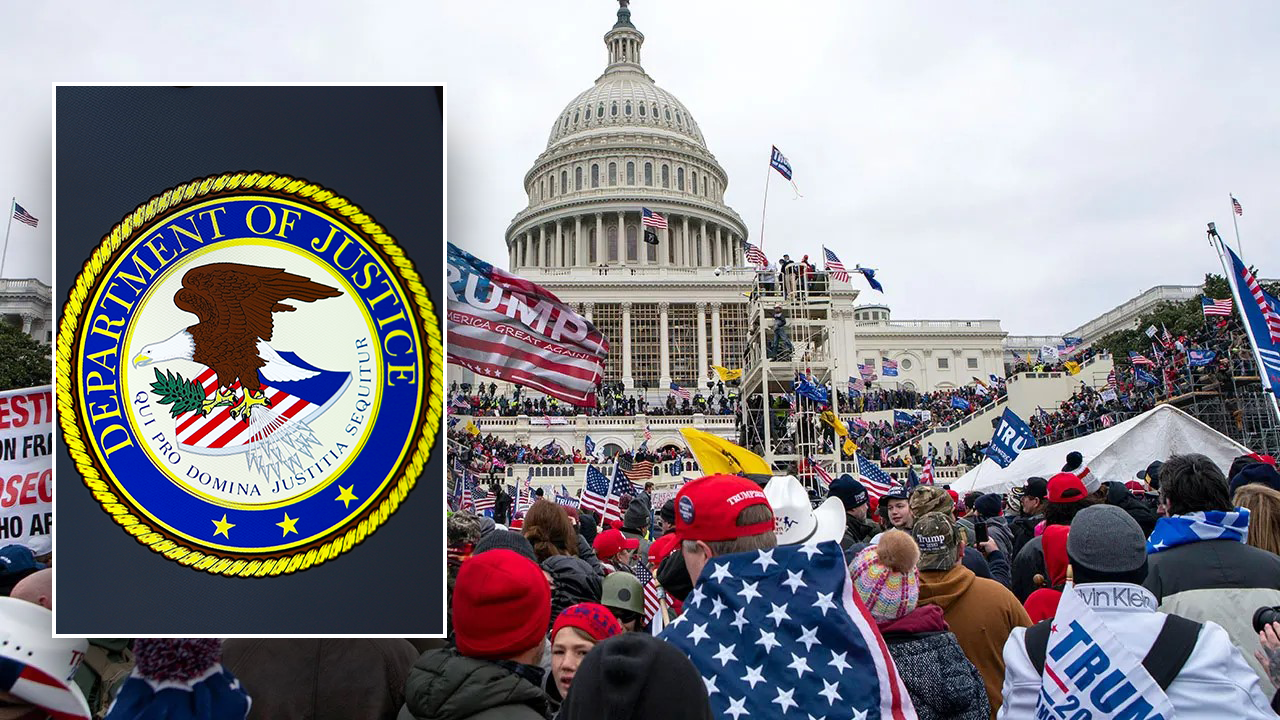
Attorneys at the Department of Justice are urging federal judges to reject petitions from at least two Jan. 6 defendants who are asking that they be allowed to return to the nation’s capital for President-elect Donald Trump’s inauguration.
Cindy Young, convicted of four misdemeanors for her involvement in the riot at the Capitol, and Russell Taylor, who pleaded guilty to a felony conspiracy charge, both petitioned the courts to allow them to return to Washington, D.C., despite provisions of their sentences requiring them to stay away.
“Contrary to Young’s self designation that she ‘poses no threat of danger to the community,’ Young presents a danger to the D.C. community, including the very law enforcement officers who defended the Capitol on January 6, 2021,” U.S. attorneys said in response to Young’s petition. The federal attorneys cited calls from Young “for retribution against those involved in January 6 prosecutions” and argued that she has failed “to recognize the seriousness of her actions.”
FBI SHOULD PROBE ‘POTENTIAL’ LIZ CHENEY ‘WITNESS TAMPERING’ IN JAN 6 MATTER, HOUSE REPUBLICANS SAY
Scene from the Jan. 6, 2021 Capitol riot. (AP Photo/Jose Luis Magana, File)
A request from Taylor, who was invited to attend the inauguration by members of Utah’s congressional delegation, is also being challenged by attorneys at the Department of Justice who argue that the serious nature of his crimes should preclude him from being able to “return to the scene of the crime.”
“He is asking for the Court to bless his desire to return to the scene of the crime, and the Court should not look past his criminal conduct the last time he was on Capitol grounds,” the U.S. attorneys wrote in a filing to U.S. District Judge Royce Lamberth. The attorneys added in their court filing that, while they had granted previous travel requests to other defendants involved in the Capitol siege, those approvals were to support people’s continued employment, and the requests did not involve travel to the nation’s capital.
TRUMP INAUGURATION: DC POLICE CHIEF EXPECTING ‘4,000 POLICE OFFICERS TO ASSIST US’
However, another Jan. 6 defendant, Eric Peterson, who was convicted of a misdemeanor in November for his involvement in the Capitol riot but has yet to be sentenced, was given approval by U.S. District Judge Tanya Chutkan to travel to the District for Trump’s swearing-in ceremony, according to Peterson’s criminal case docket. Notably, the docket did not include any responses from the Department of Justice urging Chutkan to deny Peterson’s request.
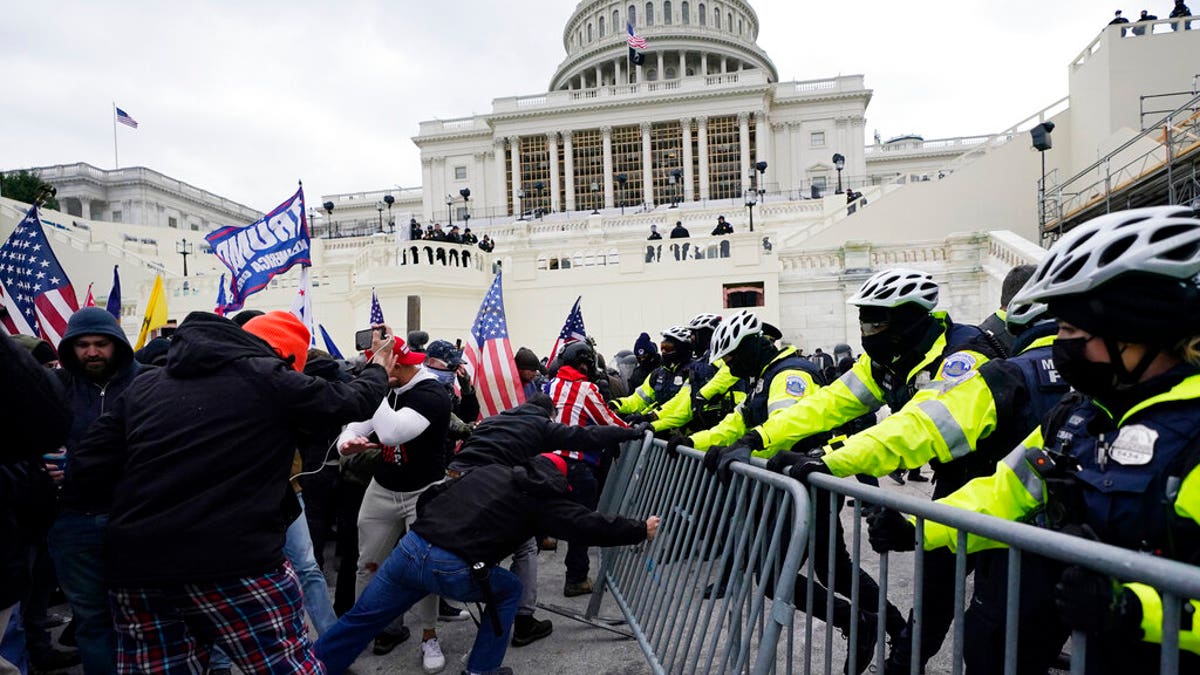
Trump supporters try to break through a police barrier at the Capitol in Washington on Jan. 6. ((AP Photo/Julio Cortez, File))
There remains uncertainty around whether Trump will pardon any, some, or all of those defendants who were convicted of crimes as a result of their involvement in the U.S. Capitol siege that occurred in 2021.
Trump has said at times that pardons will be reserved for those who remained peaceful on that fateful day; however, at other points he has suggested a blanket pardon for all those who were convicted. One thing that Trump has been steadfast on is that the pardons will come quickly following his inauguration on Jan. 20, 2025.
The Department of Justice declined to comment for this story.
-

 Politics6 days ago
Politics6 days agoCanadian premier threatens to cut off energy imports to US if Trump imposes tariff on country
-
/cdn.vox-cdn.com/uploads/chorus_asset/file/25782636/247422_ChatGPT_anniversary_CVirginia.jpg)
/cdn.vox-cdn.com/uploads/chorus_asset/file/25782636/247422_ChatGPT_anniversary_CVirginia.jpg) Technology1 week ago
Technology1 week agoInside the launch — and future — of ChatGPT
-
/cdn.vox-cdn.com/uploads/chorus_asset/file/25789444/1258459915.jpg)
/cdn.vox-cdn.com/uploads/chorus_asset/file/25789444/1258459915.jpg) Technology6 days ago
Technology6 days agoOpenAI cofounder Ilya Sutskever says the way AI is built is about to change
-

 Politics6 days ago
Politics6 days agoU.S. Supreme Court will decide if oil industry may sue to block California's zero-emissions goal
-
/cdn.vox-cdn.com/uploads/chorus_asset/file/25546252/STK169_Mark_Zuckerburg_CVIRGINIA_D.jpg)
/cdn.vox-cdn.com/uploads/chorus_asset/file/25546252/STK169_Mark_Zuckerburg_CVIRGINIA_D.jpg) Technology6 days ago
Technology6 days agoMeta asks the US government to block OpenAI’s switch to a for-profit
-

 Politics1 week ago
Politics1 week agoConservative group debuts major ad buy in key senators' states as 'soft appeal' for Hegseth, Gabbard, Patel
-

 Business4 days ago
Business4 days agoFreddie Freeman's World Series walk-off grand slam baseball sells at auction for $1.56 million
-
/cdn.vox-cdn.com/uploads/chorus_asset/file/23951353/STK043_VRG_Illo_N_Barclay_3_Meta.jpg)
/cdn.vox-cdn.com/uploads/chorus_asset/file/23951353/STK043_VRG_Illo_N_Barclay_3_Meta.jpg) Technology4 days ago
Technology4 days agoMeta’s Instagram boss: who posted something matters more in the AI age



